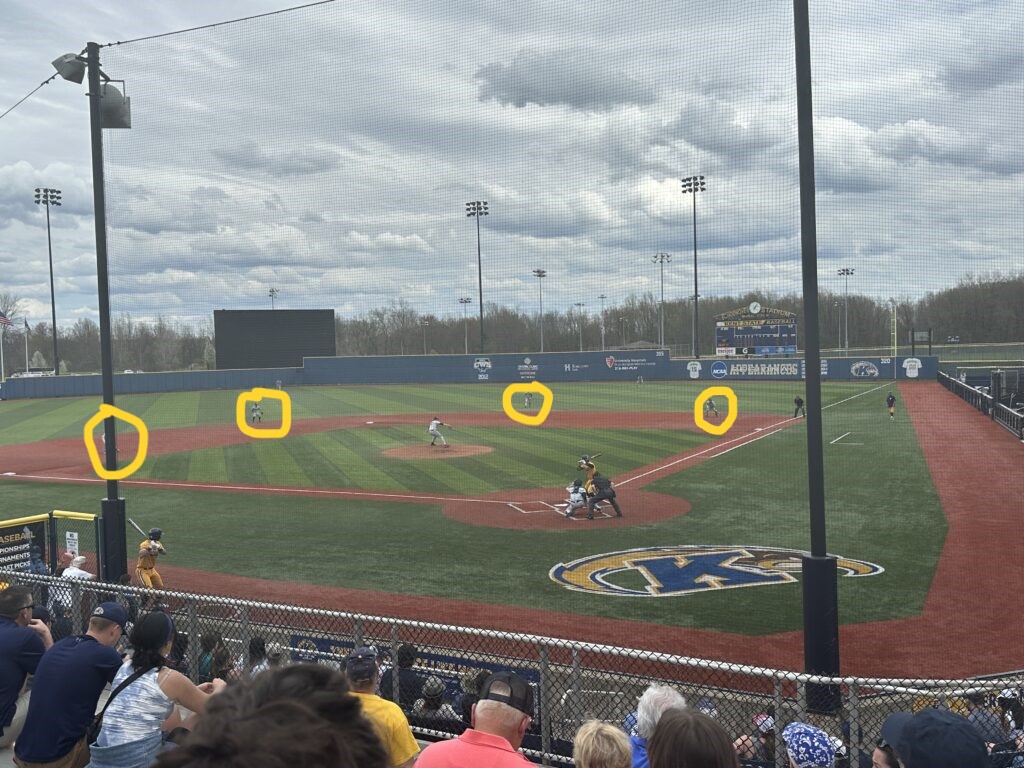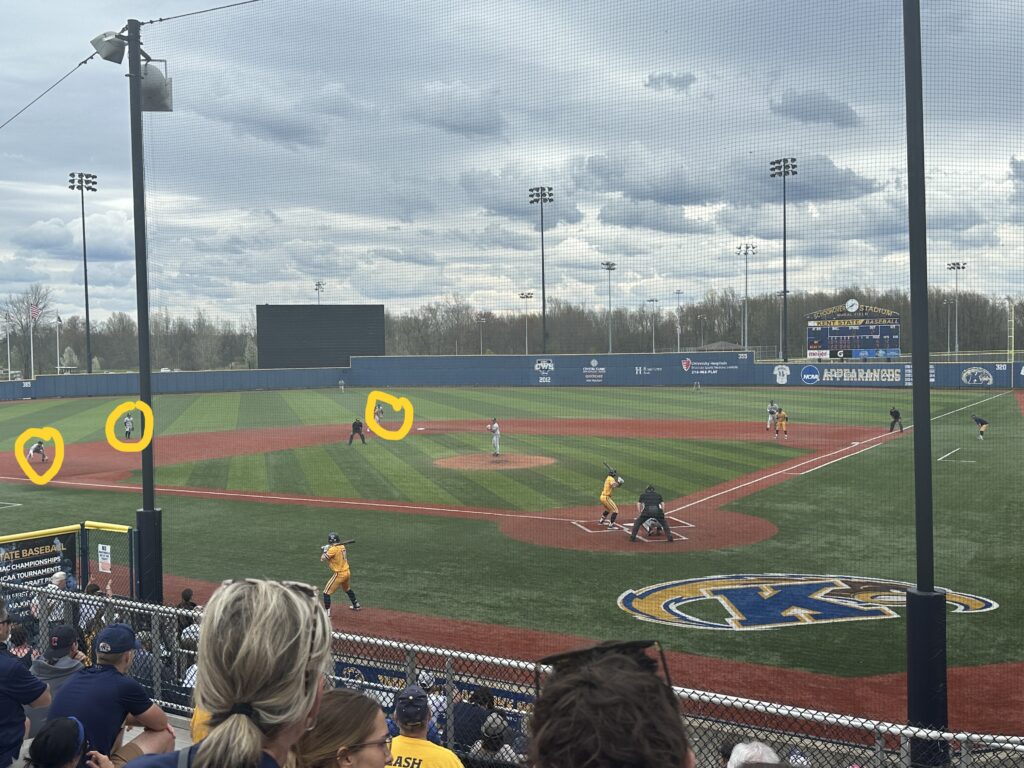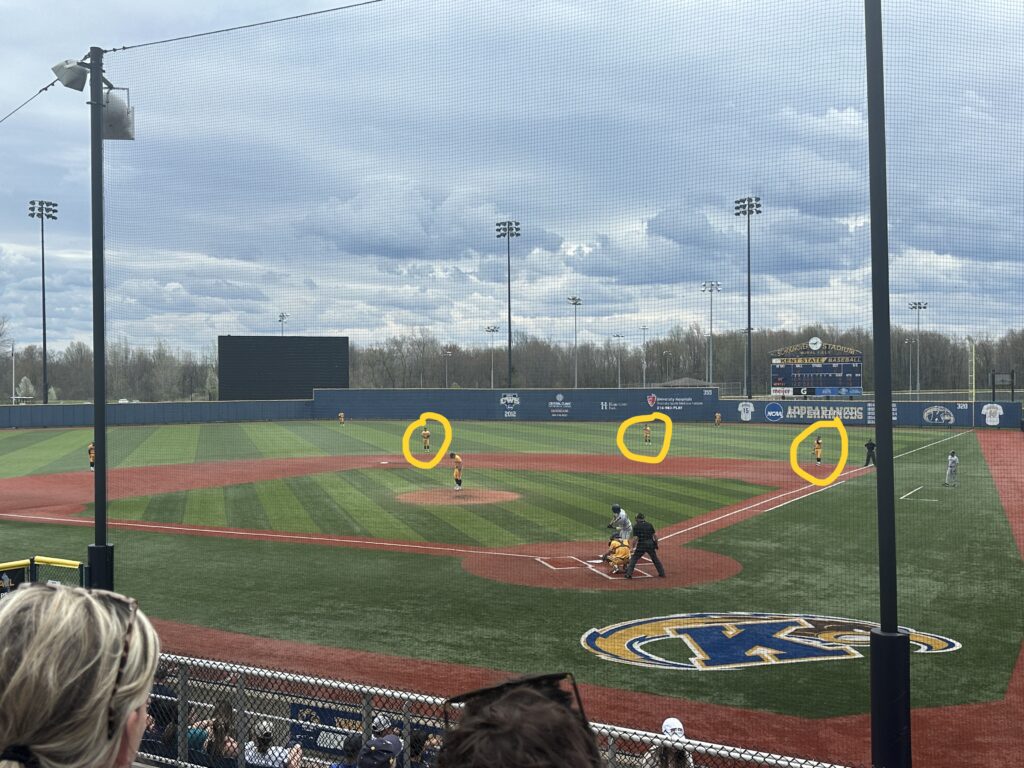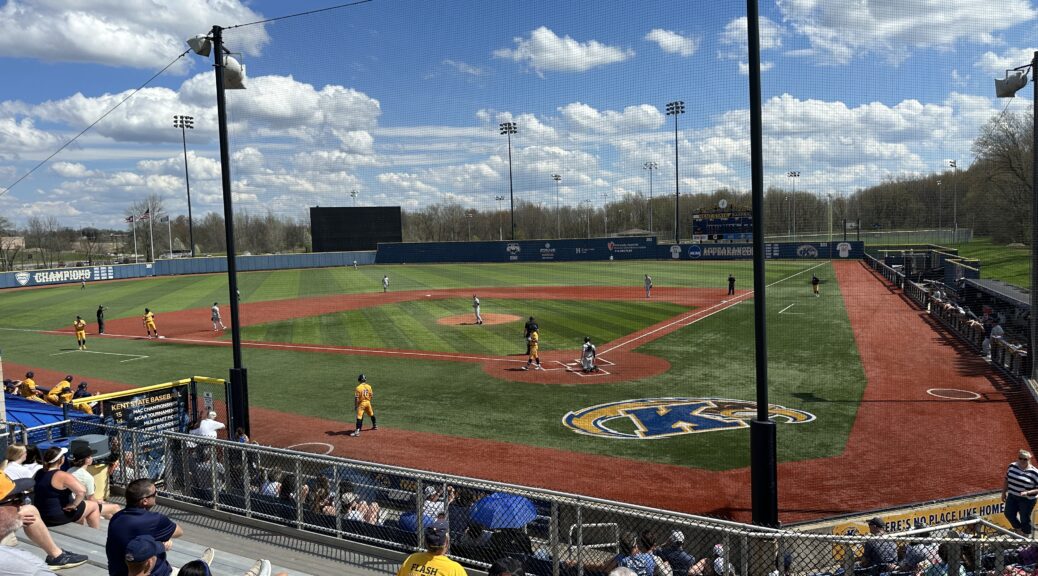
The rise and ban of the defensive shift in the MLB
Gaining any advantage in sports can mean the difference between winning and losing.
In the early 2010s, according to The History of Shifting in Baseball, Major League Baseball teams started implementing defensive shifts relative to where a batter is most likely to hit the ball.
However, before the 2023 MLB season, during the owner’s and MLB Players Association meetings, it was voted on that the shift would ultimately be banned.
While on defense, there must be two infielders on either side of second base, and all infielders must have both feet in the dirt before the pitch is thrown.
As the MLBPA did not vote for the ban of the defensive shift, the MLB voted for it and the change would be implemented for the 2023 season.
Along with the banning of the shift, MLB has also adopted a pitch clock.
These were the two significant changes going into the season to add more action for fans to see and speed up the pace of play.
When enforcing the shift ban, it comes at the responsibility of the teams to ask for a review.
When the play goes under review, the team that asked for the challenge can either accept the outcome of the play or take an automatic ball for the current batter instead.
So far, there have been zero challenges in the MLB regarding players needing to be in the correct position on defense during the 2023 season.
As more numbers became available to teams across the MLB, they were able to see that certain hitters predominately hit the ball to one side of the field.
As seen in photo 1 this is a standard defensive alignment, where two infield players are on either side of second base.
In figures one and two are examples of the defensive shift; when the defense crowds one side of the field, where the batter is most likely to hit the ball.
“I liked how there was a game within the game.”
Tyler Hatcher, Kent State student
There has been criticism from fans, who think that the shift in baseball has taken the enjoyment out of the game; however, it has become a valuable part of the strategy in the modern baseball era.
Tyler Hatcher, a student at Kent State University, wasn’t pleased with the decision to ban the shift because of the strategy that it held.
“It was something that made hitters have to adjust,” he said. “I liked how there was a game within the game that applied to every batter throughout the game.”
Now, after nearly a month of baseball games without the shift, Hatcher has had a change of heart.
“MLB wanted to see more action throughout the game, and that is what it has been through the games played so far this season,” he said. “I’m all for seeing more throughout the game, but I do miss seeing how exactly a hitter would try and adjust to the shift being deployed on them.”
Being able to have more action throughout a game is something that Kent State baseball coach Jeff Duncan thinks is important going forward.
“I think that it has made the game more exciting,” Duncan said. “You’re seeing more offense throughout the game, and I think that is something everyone wants to see when watching a game.”
During the 2022 MLB season, there were over 60,000 shifts deployed according to Baseball Savant – 55% of left-handed batters faced a shift, while right-handed batters saw one 19% of the time.
One hundred fifty players experienced a shift during their at-bat more than 60% of the time. 20 of these batters were right-handed.
Left-handed batters have always seen the majority of the extreme shifts compared to their right-handed counterparts because of the simplicity of recording an out at first base.
If you were to deploy a similar shift to a right-handed batter, it would be difficult to record an out on a ground ball to a fielder playing in left field.
The shorter throw from a player in right field compared to left field is the reason for the dramatically higher numbers for left-handed batters.
In the 2016 season, the first year that Baseball Savant began tracking data, there were 24,434 total defensive shifts, with only one team, the Houston Astros, being the only team to shift more than 30% of the time.
In the final year of the shift being allowed, there were over 60,000 shifts, and more than half of the league shifted more than 30% of the time.
“You’ve seen the shift increase over the years because of the data that is available to teams,” Duncan said. “Teams will do everything they can to try and gain the smallest advantage.”
“It can open the game up and just make everything more exciting.”
Kent State baseball coach, Jeff Duncan
The shift is less widely used at the college level than at the MLB level, but Duncan has heard that a ban could be coming to the college level next season.
“It’s something that I like to see; it can open the game up and just make everything more exciting,” he said. “You’ve seen through a couple of weeks in the MLB that players are stealing bases again because there have been around 70 stolen bases opening weekend.”
On opening day in 2022, there were five stolen bases; in 2023, 21 were stolen.
Aidan Longwell, who is a left-handed batter for Kent State says he tries to ignore the shift.
“If I make good contact more times than not I’m going to be able to find success at the plate.”
Aidan Longwell, Kent State first basemen
“It’s something that I know happens when I’m batting,” Longwell said. “I just can’t focus on what the other team is trying to.”
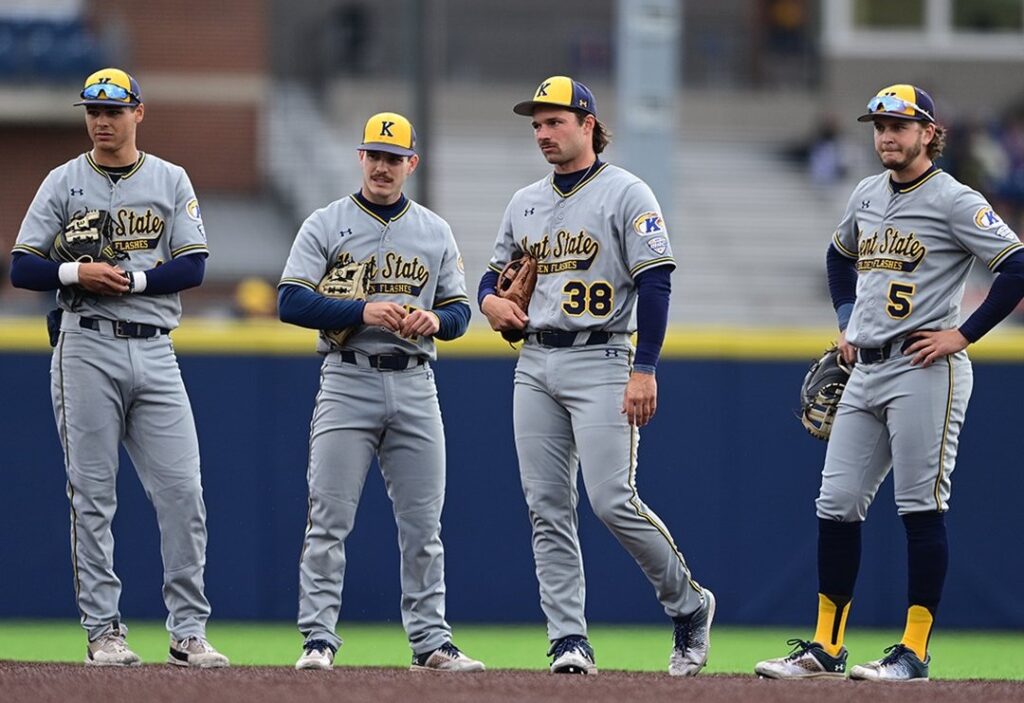
Longwell is having the best season of his college career as he is batting a Mid-American Conference best .422 – 133 points higher than his average last season.
“Going up to bat and hitting the ball hard is what I’m trying to do,” Longwell said. “I know if I make good contact more times than not I’m going to be able to find success at the plate.”
Batters have been able to be more “free” without a defensive shift when they’re at the plate.
“From an offensive standpoint, I think guys are striking out less and moving the baseball more,” Duncan said. “When the whole field is open to hit, you’re able to be a little more relaxed when you’re inside the box.”
“You should want to play the same game as everyone else,”
Tyler hatcher, Kent State student
Hatcher believes the ban should be across all leagues since the most important league has already adopted new rules.
“If your goal is to make it to the highest level, then you should want to play the same game as everyone else,” he said.
The shift in baseball is a relatively new idea since the number per season nearly tripled from 2016 – the first season Baseball Savant began tracking data to the final year in 2022.
Being able to see more action throughout a game is an emphasis that MLB has wanted to see since, in 2022, the league batting average was .243 – the fifth worst ever and lowest in 54 years.
Who will benefit the most?
As the shift comes to an end, more and more players will see more opportunities to see more at bats result in hits.
Corey Seager of the Texas Rangers led all players with 71 ground outs into the shift on balls hit harder than 90 mph.
The three-time All-Star has experienced the highest amount of shifts going from 11% of the time in 2016 to over 90% of his at-bats in 2022.
Yes, there have been changes, but the changes we will see will be gradual.
You can expect more athletic plays by second basemen since they are forced to play in their natural positions, and players’ batting averages will rise slightly.
For Seager, he had an estimated nine balls that would’ve been recorded as a hit without a shift, according to Sports Illustrated, which would’ve raised his .245 batting average rise to .260.
What we’ve seen so far
Through three weeks of games at the MLB level, you’re seeing more hits go for hits that, last season, would have been outs due to the shift.
The batting average for batted balls put into play has increased by seven points from 2022.
On balls hit onto the ground, left-handers have seen a 25-point increase, and right-handed batters 17 points.
The rule for banning the shift is something that is here to stay. Though it is not an adjustment for fans because it generates more action, it is something that coaches all around the MLB and potentially college teams have to look around and find the next way to gain that slight advantage throughout the game.
